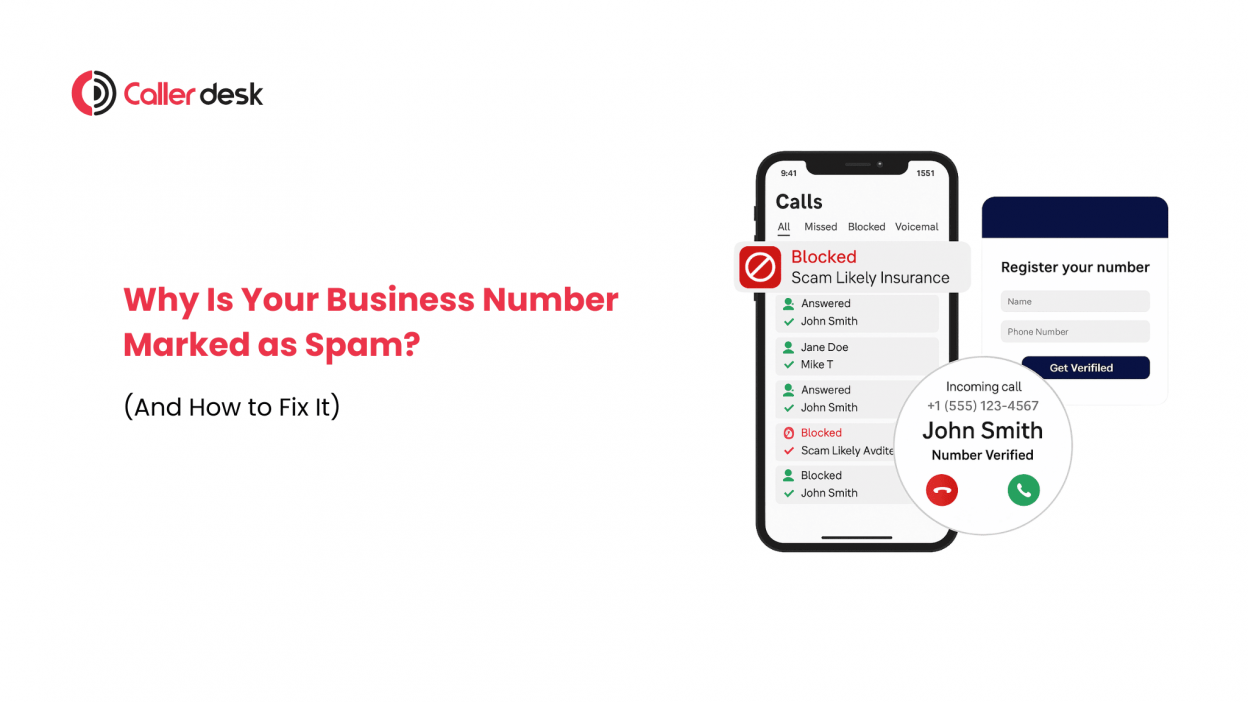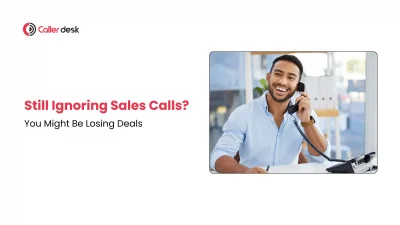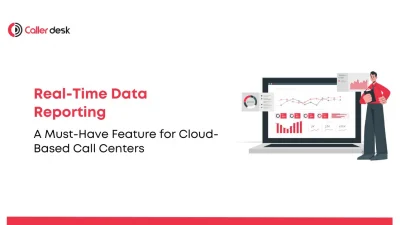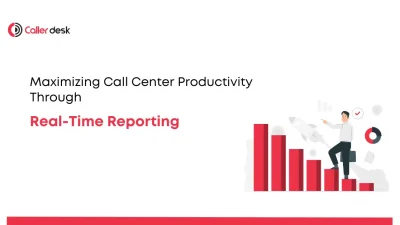You’re working hard to grow your business.
You’ve built a strong product, trained your sales team, and started reaching out to potential customers.
But then something strange happens…
Nobody answers your calls.
And it’s not because they’re too busy.
It’s because their phone shows your number as “Spam” or “Scam Likely.”
Sounds familiar?
You’re not alone.
Thousands of genuine businesses run into this every day. In a world flooded with robocalls and fraud, even honest companies get caught in the spam filter—killing trust and damaging conversions before the conversation even begins.
It’s frustrating, unfair, and expensive. But the good news is: there’s a fix.
With the right approach, you can clean up your number’s reputation, regain trust, and make sure your calls get answered.
What Is Caller Reputation?
Think of your phone number like a school student. Every time it makes a call, it’s being graded.
This grade is called your caller reputation.
Phone companies and spam filters keep track of how your number behaves. Just like a student earns a good or bad reputation based on their actions, your number earns a score based on:
- How many people answer your calls
- How often people hang up or block you
- How frequently you call the same number
- If you follow proper calling rules, like business hours and reasonable frequency
If your calling habits are respectful and responsible, your score goes up. That means your number is seen as trustworthy.
But if your number is overused, gets blocked often, or calls too aggressively, your score drops—and that’s when your calls get flagged as spam.
And once your number is marked, even genuine calls won’t go through. People won’t trust it. You might lose leads without even knowing it.
That’s why keeping a strong caller reputation is key if you want more people to pick up your business calls.
Why Do Business Numbers Get Marked as Spam?
You’re making genuine sales or support calls—but your number still shows up as [Spam] or [Unknown Caller] on someone’s phone. Why?
It’s because smartphones and telecom companies now use smart filters to protect users from spam calls. These filters are not perfect. Sometimes, even real businesses get wrongly flagged.
Here’s what causes that:
1. Calling Too Many Numbers Too Quickly
If you make lots of calls in a short time, your number looks like it’s part of a call center or a robocall campaign. Spam filters may assume you’re not a real business, even if you are.
2. Calling People Who Didn’t Ask for It
When you call people who never gave you permission or didn’t expect your call, they may block or report your number. Over time, this hurts your caller reputation.
3. Using Different or New Numbers Every Time
If your number changes often or isn’t recognized, it raises red flags. Telecom systems may think you’re trying to hide your identity or avoid detection—just like spam callers do.
4. Calling at the Wrong Times
Calls made very early in the morning or late at night can annoy people. Even if your intention is good, timing matters. If too many people reject or report your calls, it damages your number’s reputation.
5. No Caller Name Showing
When your number shows up as “Unknown,” people get suspicious. If your caller ID doesn’t show your business name clearly, chances are they won’t trust it—or answer.
How to Keep Your Number from Being Marked as Spam
If your business depends on calling customers, you can’t afford to have your number flagged as spam.
Here’s how you can protect your number and make sure your calls get answered.
1. Always Use the Same Number
If you keep changing the number you call from, you look suspicious.
Spam filters flag businesses that call from too many different numbers.
Stick to one official number (or a small group of verified ones). Use the same number consistently—it builds trust and keeps your reputation clean.
2. Don’t Overcall the Same People
If someone doesn’t answer your call, don’t keep calling them again and again.
Too many attempts can make your number look spammy.
Follow this rule:
- Call a person no more than 2 times a day
- Maximum 5 times in a month unless they respond
Fewer calls = lower chances of being flagged.
3. Call Only During Business Hours
Avoid calling early in the morning or late at night.
Stick to the normal working window: 9 AM to 6 PM, based on the customer’s time zone.
Calling at odd hours can lead to complaints—and that’s what spam filters notice.
4. Don’t Pretend to Be Local with Fake Numbers
Some companies try to use area codes that match the customer’s city. It may seem smart—but it backfires.
Spam filters know this trick. Using fake “local-looking” numbers can hurt your reputation.
Instead, use your verified business number. Being honest wins in the long run.
5. Say Who You Are Right Away
The first thing your customer hears matters.
Start the call by clearly stating:
- Your name
- Your company
- Why you’re calling
Example: “Hi, I’m Priya from XYZ Insurance. You had asked for a car insurance quote on our website last week.”
This reminder helps the customer connect the dots and feel more comfortable picking up your calls in the future.
6. Let the Call Ring Long Enough
Spam filters don’t like calls that hang up too quickly.
If you cut the call before it rings 4–5 times, it might look like spam behavior.
Let your call ring for at least 30 seconds before ending it. This also gives the customer more time to pick up.
7. Use the Right Call Management Tools
Want to protect your number and get better results from your calls?
Start using a smart call management tool to keep your calling process clean, efficient, and trusted.
These tools help you:
- Identify which numbers are valid or inactive
- Avoid calling wrong or disconnected numbers
- Automatically remove contacts who don’t respond
- Display your business name on outgoing calls
- Track call performance, timing, and response rates
You can use Truecaller Verified Business, which displays your number as ‘Verified’ along with your brand name and logo, helping you build instant trust with customers.most importantly—keeps your number safe from spam labels.
Best Practices to Prevent Your Number from Being Marked as Spam
You’ve prepared everything before the call—great. But what happens during the call matters just as much.
Follow these best practices to increase your chances of a successful and respectful conversation.
1. Use a Clear and Consistent Caller ID
Always call from the same phone number and make sure it displays your business name.
If your number keeps changing, customers may feel confused or think it’s a scam.
2. Let the Phone Ring for at Least 30 Seconds
Don’t hang up too quickly. Let the phone ring for at least 5 to 6 times or 30 seconds.
Spam calls usually disconnect fast, so letting it ring longer shows your call is genuine.
3. Start Talking Within 2 Seconds on Voicemail
If the call goes to voicemail, don’t stay silent. Start speaking within the first 2 seconds.
For example: “Hi, this is Ramesh from QuickLoans. You had requested a call about your loan approval.”
This helps avoid being flagged as a silent or spam call.
4. Be Honest, Clear, and Respectful
Avoid tricky sales tactics. Be clear about who you are and why you’re calling.
Bad example: “You’ve won a prize. Press 1 to claim it.”
Better example: “I’m calling to help you with the service you requested on our website.”
Always be polite and to the point.
5. Mention How You Got Their Number
Let the person know how you received their contact information.
For example: “You submitted your number on our website last week for a free demo.”
This helps people remember and trust the call.
6. Use a Sales Script That Feels Personal
Don’t sound like a robot. Use your CRM or calling tool to check previous chats, interests, or actions.
Then adjust your message to make it feel relevant and personal.
7. End with a Clear Next Step
Whether the call is successful or not, end professionally.
For example: “Thanks for your time. If you need help, you can call us back anytime on this number.”
This leaves a good impression and keeps the communication open.
Conclusion
If your number is marked as spam, your calls won’t reach the right people—no matter how genuine your business is.
But the good news? You can fix it.
Stick to one verified number, follow smart calling habits, register your caller ID properly, and always be clear about who you are and why you’re calling.
Also, consider using reliable call management tools to track your performance, clean your contact list, and protect your number from being flagged.
When you build trust with every call, more people will answer—and your business will grow faster.



